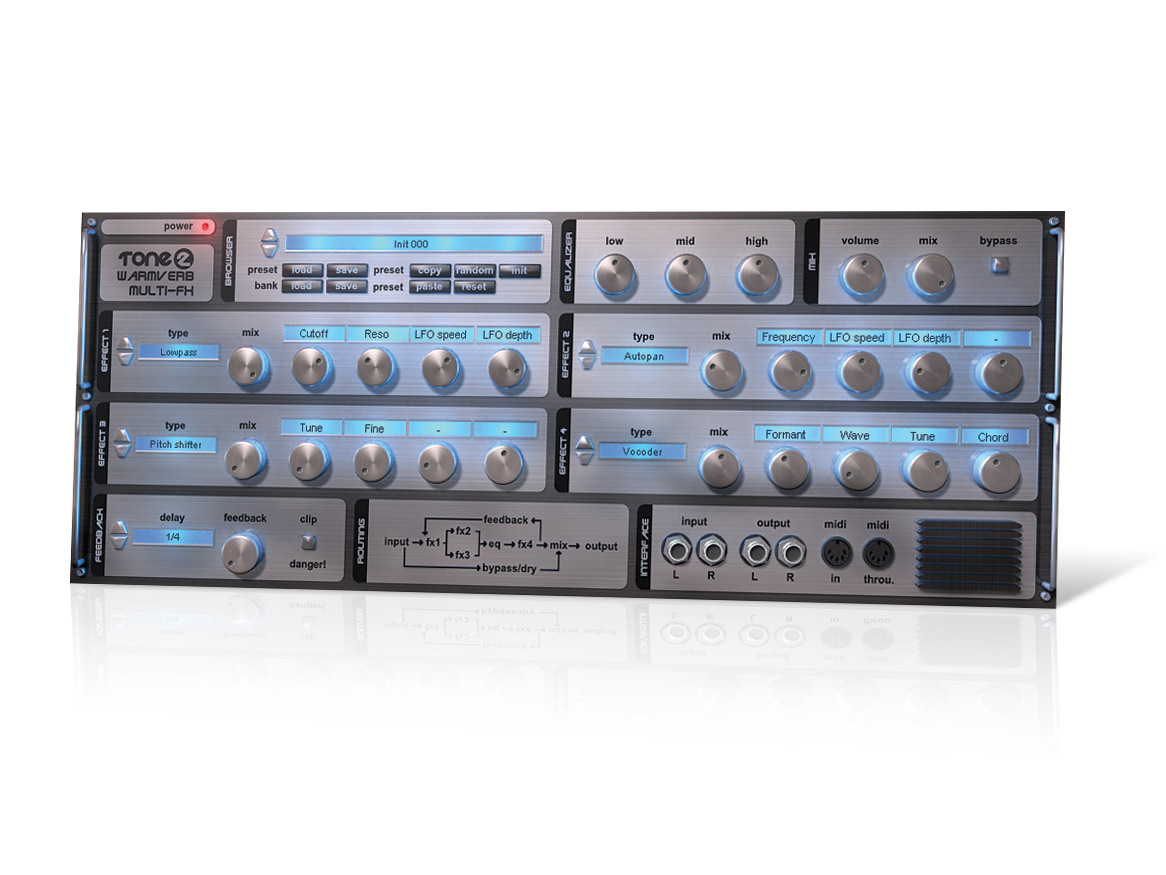MusicRadar Verdict
Not particularly groundbreaking, but the clever architecture and some great effects make Warmverb a worthwhile buy.
Pros
- +
Bags of effects. Plenty of ear-catching presets. Unusual feedback routing ability. Straightforward to use. Superstring and Talkbox effects are cool. Good value.
Cons
- -
Not many parameters. Some effects aren't so impressive.
MusicRadar's got your back
As modern DAW software becomes ever more flexible, the humble multi-effects processor faces extinction. Why pack lots of bite-sized effects into a single plug-in when an application like Ableton Live enables you to create custom effects chains of practically unlimited complexity?
However, Warmverb does at least offer routing possibilities that make it stand out from the crowd.
Each of the 31 included effects has a maximum of four parameters and a mix control, so you don't get a massive level of tweakability with each one. As such, it seems like Tone2 intends Warmverb to be more for creating intense special effects, a theory supported by the plug-in's bombastic, over-the top presets.
The effects are divided into seven loose categories: reverbs, delays, modulation-based effects, filters, distortion, a surround encoder, and a grab-bag of volume and pitch effects.
In use
The reverbs, which Tone2 describes as "reference class", are OK, but as the only available parameters are Size, Damp, Predelay and Modulate, they're pretty limited.
The delays don't even take advantage of the four available parameter knobs, offering just Time, Feedback and either Damping or filter Cutoff controls, depending on which one you use.
The modulation effects are more interesting, and though the chorus and ensemble effects are basic, with only speed and depth, the flanger and rotary effects are great. The Superstrings unison-style module is the best of the lot though, sounding fantastic on synth sounds.
Want all the hottest music and gear news, reviews, deals, features and more, direct to your inbox? Sign up here.
The filters include low-, high-, band-pass and phaser varieties, each of which has Cutoff, Resonance, LFO Speed and LFO Depth controls. Different pole settings would have been good, but they still sound tasty.
There's also a superb talkbox mode with a choice of vowel sounds, This effect in particular would benefit from having more available parameters; for example, the formant frequencies are controlled exclusively by the LFO.
The distortion section is probably the least impressive area, with just Drive and Postamp controls - but it's fine for basic signal dirtying.
The Surround Encoder offers Dolby Pro Logic surround encoding that pans the signal to either the back, left, right, centre, rear left or rear right of the surround field.
Finally, there's a mixed bunch of effects, such as a vocoder with built-in carrier settings, a pitchshifter that pitches down a lot better than up, and pretty standard tremolo, auto-pan and ring-modulation effects.
Routing
Warmverb's architecture enables the user to feed the post-effect signal back to earlier in the signal chain, with an overall wet/dry mix control for mixing the pre-effect signal into the final output. This functionality is at the very least awkward - if not impossible - to replicate in most DAWs.
The plug-in has four slots, each of which can hold any effect, and the routing is fixed but fairly flexible. FX1 is followed in series by FX2 and FX3, which are parallel to each other.
These are followed by the EQ section, with its three fixed bands. FX4 is next, after which the signal can be fed back to FX1's input. The feedback can be sync-delayed by up to two bars, and has a mix control and clip mode button that turns the feedback clipping on and off.
After the feedback tap is the mixer section, where the wet/dry balance between the processed and unprocessed signals is set before the audio is finally output from the effect.
Summary
Warmverb is at times frustratingly limited, and while it looks like it could be a handy box for live tweakage, not all of its parameters can be manipulated without noticeable sonic artifacts.
However, it's more than the sum of its parts and can work magic on the right source. This a neat tool for experimentation and is certainly inspirational, but for those in the business of complex sound design, it's a little simple.
Listen to three examples of what Warmverb can do:
Dry to wet synth
Huge reverb
FX Legend
Computer Music magazine is the world’s best selling publication dedicated solely to making great music with your Mac or PC computer. Each issue it brings its lucky readers the best in cutting-edge tutorials, need-to-know, expert software reviews and even all the tools you actually need to make great music today, courtesy of our legendary CM Plugin Suite.

